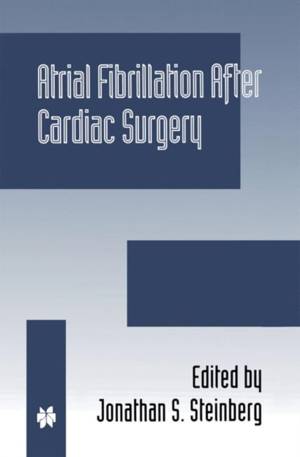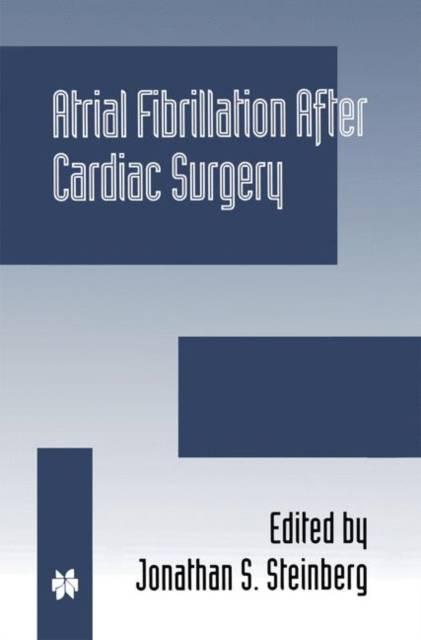
Je cadeautjes zeker op tijd in huis hebben voor de feestdagen? Kom langs in onze winkels en vind het perfecte geschenk!
- Afhalen na 1 uur in een winkel met voorraad
- Gratis thuislevering in België vanaf € 30
- Ruim aanbod met 7 miljoen producten
Je cadeautjes zeker op tijd in huis hebben voor de feestdagen? Kom langs in onze winkels en vind het perfecte geschenk!
- Afhalen na 1 uur in een winkel met voorraad
- Gratis thuislevering in België vanaf € 30
- Ruim aanbod met 7 miljoen producten
Zoeken
Atrial Fibrillation After Cardiac Surgery
€ 251,45
+ 502 punten
Omschrijving
Cardiac surgery is performed on hundreds of thousands of patients a year, and can have an important beneficial impact on the outcomes of patients with coronary and valvular heart diseases. Despite the favorable recovery of most patients, some will have their post-operative period interrupted by the development of atrial fibrillation, with a host of potential complications including stroke. High risk subgroups may develop atrial fibrillation in more than half of cases, and often despite aggressive prophylactic measures. Treatment of atrial fibrillation and its aftermath can also add days to the hospital stay of the cardiac surgical patient. In an era of aggressive cost cutting and optimization of utilization of health care resources, the financial impact of this arrhythmic complication may be enormous.
Experimental studies have led to a greater understanding of the mechanism of atrial fibrillation and potential precipitating factors in the cardiac surgical patient. Prophylactic efforts with beta-blockers, antiarrhythmic drugs and atrial pacing are being used, or are being investigated in clinical trials. New methods of achieving prompt cardioversion with minimal disruption of patient care, and prevention of the thromboembolic complications of atrial fibrillation, are also important therapeutic initiatives. This text is designed to aid health care professionals in the treatment of their patients in the recovery period after cardiac surgery, and to instigate additional research efforts to limit the occurrence of, and the complications following, this tenacious postoperative arrhythmia.
Experimental studies have led to a greater understanding of the mechanism of atrial fibrillation and potential precipitating factors in the cardiac surgical patient. Prophylactic efforts with beta-blockers, antiarrhythmic drugs and atrial pacing are being used, or are being investigated in clinical trials. New methods of achieving prompt cardioversion with minimal disruption of patient care, and prevention of the thromboembolic complications of atrial fibrillation, are also important therapeutic initiatives. This text is designed to aid health care professionals in the treatment of their patients in the recovery period after cardiac surgery, and to instigate additional research efforts to limit the occurrence of, and the complications following, this tenacious postoperative arrhythmia.
Specificaties
Betrokkenen
- Uitgeverij:
Inhoud
- Aantal bladzijden:
- 169
- Taal:
- Engels
- Reeks:
- Reeksnummer:
- nr. 222
Eigenschappen
- Productcode (EAN):
- 9780792386551
- Verschijningsdatum:
- 31/12/1999
- Uitvoering:
- Hardcover
- Formaat:
- Genaaid
- Afmetingen:
- 163 mm x 241 mm
- Gewicht:
- 430 g

Alleen bij Standaard Boekhandel
+ 502 punten op je klantenkaart van Standaard Boekhandel
Beoordelingen
We publiceren alleen reviews die voldoen aan de voorwaarden voor reviews. Bekijk onze voorwaarden voor reviews.








